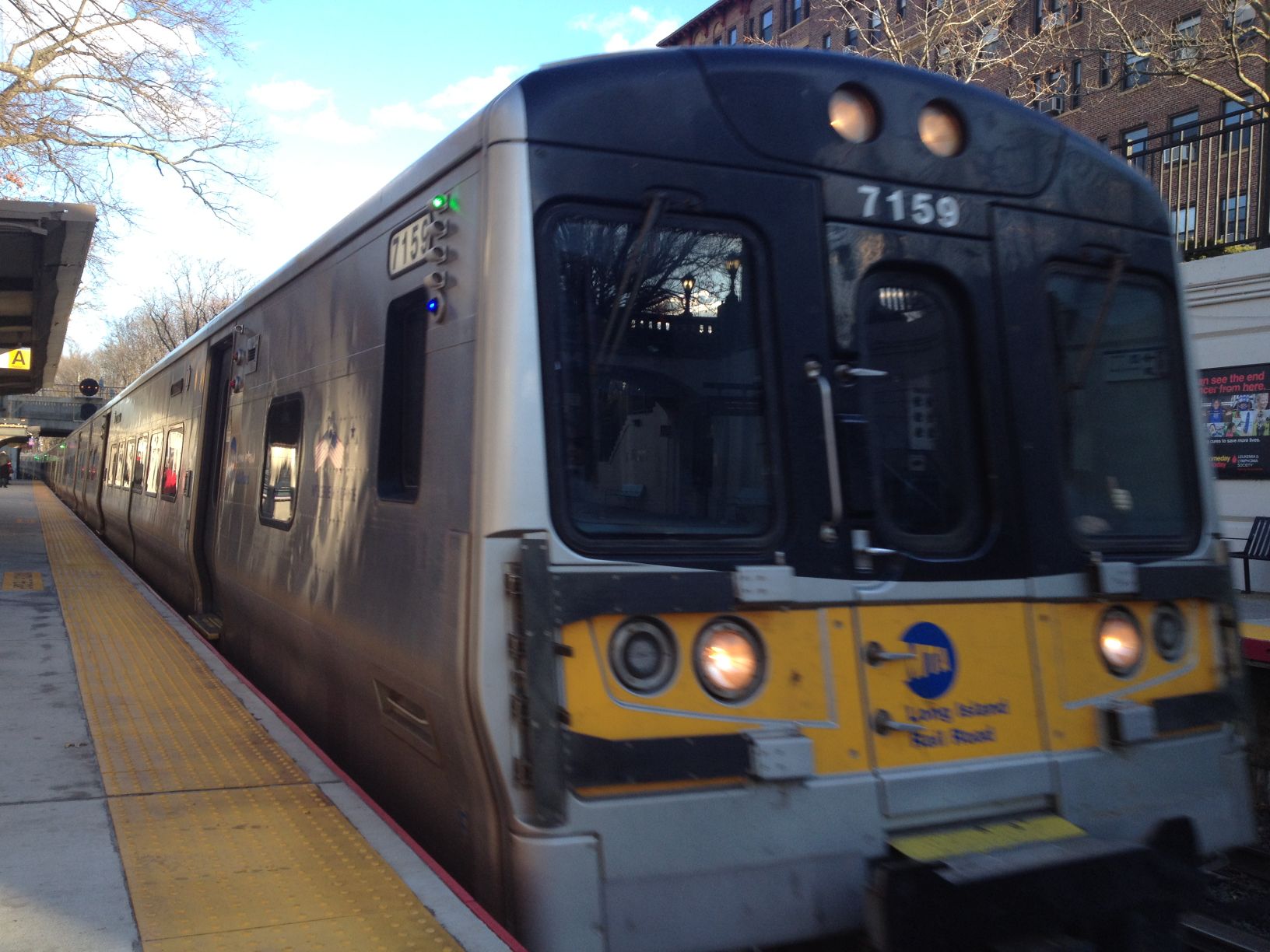The Long Island Rail Road pledged to examine how its proposed third track project will affect emergency services, parking and public health in the final “scoping document” released last Friday.
The 136-page document is a revised outline of an environmental study of the project that incorporates more than 750 public comments submitted through mail, email, the project’s website and at public hearings in May, which more than 1,200 people attended.
Much of the document is identical to the draft scope released in May, but the LIRR included new project details and also separately released maps showing the lines of the LIRR’s right of way, within which Gov. Andrew Cuomo has promised the project will be built to avoid taking any residential property.
But it still leaves some opponents of the $1.5 billion, 9.8-mile proposal to add a track from Floral Park to Hicksville with questions and worries that the project will do more harm than good.
“As of right now I can’t see this project having any positive impact for Floral Park, and if the project’s going to go through, we have to figure out a way to get something out of this deal,” said Matthew Sexton, a Floral Park civic leader.
In response to public comments, the LIRR says it will study how project construction could affect emergency service routes and the effects of potentially harmful chemical particles from trains. It will also examine the number of parking spaces the project could remove and where parking could be added.
While construction details are still to come, the document includes more specifics about what work the project entails. In addition to eliminating the seven street-level railroad crossings along the corridor, it will also modify seven bridges, upgrade five stations and install new railroad crossovers to allow trains to switch from one track to another, the document says.
The document also gives the most extensive information to date from the LIRR about freight train traffic in response to worries about traffic increasing and endangering local neighborhoods.
The New York & Atlantic Railway, the only freight company operating on the LIRR, currently runs three round-trip trains — down from five in 2009 — through the Main Line corridor, and the LIRR only allows them to run outside of rush hours, the document says. At the freight industry’s current growth rate, there won’t be a need to add any trips until at least 2040, it says.
The Right Track for Long Island Coalition, a group of 172 corporations, labor unions, nonprofits and individuals supporting the project, praised the fact that the published right of way map keeps the project’s pledge to take no residential property. The group credited state officials and the Metropolitan Transportation Authority for its public outreach since announcing the project in January.
“For a project of this magnitude to require zero residential acquisitions is a testament to the extraordinary effort by the governor and the MTA to do this the right way and with community support,” said Dave Kapell, the coalition’s executive director and a former mayor of Greenport. “The governor has kept his promise to keep homeowners in their homes, and there is no doubt that this third track will benefit our region, our economy and our families for generations to come.”
But the new information does not assauge Sexton’s worries that the project will increase traffic and disturb the quality of life in Floral Park without giving residents any definite benefits, such as better train service or fixes at its 60-year-old train station.
Sexton and Tanya Lukasik of Hicksville, founder of the pro-transparency group Open Nassau, also questioned the LIRR’s claims about freight. Freight should be measured in tons, not the number of trains, to gauge how growth in train loads could affect railroad infrastructure, Sexton said.
Lukasik likened the third track to adding a lane to the Long Island Expressway: “If you create another lane it’s going to of course accommodate freight.”
The environmental review to be released later this year will contain full details about the third track’s impact on the surrounding communities. A public comment period will follow.
The MTA plans to continue meeting with local officials and community leaders, and its information center at the Mineola LIRR station is open for the public to review project materials and ask questions.
Lukasik said she would like to see project officials help the public understand the final scope and understand all the information it contains.
“What would be nice is, if they really wanted to conduct community outreach, is to have a meeting where you can break down this content and explain it to people, because is the average resident going to read through 140 pages of content? I don’t know,” she said.



